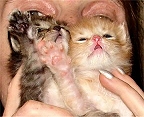When planting or caring for new or unfamiliar trees, one must be able to recognize what type it is and determine whether or not it is a native species. A native tree is one that grows naturally in a region and is not introduced from an outside area. According to the United States National Arboretum, a native plant is one that was already present in a specific North American region prior to the arrival of Europeans. Native trees are generally a good choice for one's property, as their long history in the region makes them ideally suited for the environment and climate. They also tend to be more resistant to things such as pests and diseases. Additionally, they often require less maintenance, including watering. Before determining whether a tree is native, however, it is first necessary to correctly identify it.
To properly identify a tree, one may turn to the Internet, an area nursery, or a pocket identification guide. Before checking these sources, however, take a careful look at the tree in question. When examining the tree, one may use a camera, make notes and drawings, and even retrieve a sample. Take a look at its appearance in terms of its shape and form and the look of the branches. If the tree is thriving, details such as the surrounding environment, including whether it is in an area that receives an abundance or limited amount of sun, can be indicators that may point to one type of tree and eliminate another. People should also look at the bark of the tree and make note of its thickness and color. Even its texture can be helpful.
It's important to also take a look at the leaves and any fruit on the tree. Some of the things to take note of if attempting to identify a tree by its leaves include whether there are needles or leaves that are broad, narrow, flattened, or like scales. Depending on the initial inspection of the leaves, one should assess whether they are clustered or single. If flat, make note of whether they are simple or compound leaves and if they are rounded or pointed. When determining a plant by its fruit, pay attention to whether it is a winged fruit, a cone, an acorn, a pod, or a berry. Tree fruit is what carries the seed, and it can be hard or soft and fleshy. Even a nut, which contains seeds, is considered a fruit. The class and type of fruit is a big step in the identification process.
All of these observations, notes, and/or images should then be compared to the resource being used. Once the type has been determined, use the name of the tree to conduct another Internet search or take a trip to an area nursery. When inquiring at a nursery, it is important to choose one that has a helpful and knowledgeable staff. These resources will know whether the type of tree is native to the region or not.
Click the links below for more information on native trees and tree identification:

